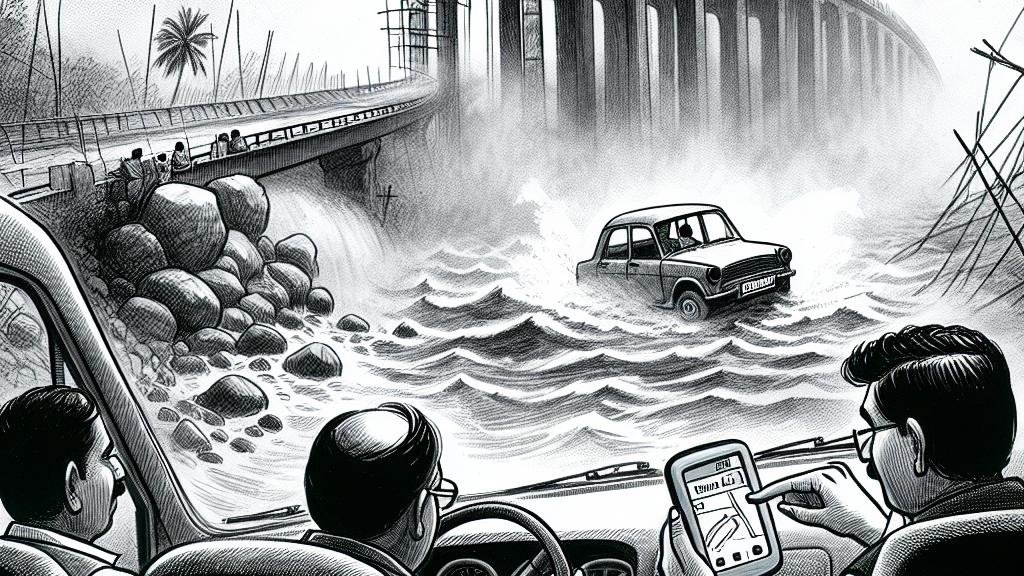Tragic Accident Due to Google Maps Incorrect Route Leads to Deaths in India
Overview
- A devastating accident in Bareilly, India, claimed the lives of three men when their car fell from an incomplete bridge.
- Google Maps mistakenly guided them to a construction site that lacked proper safety measures.
- Families demand accountability from both Google and the construction company over significant safety oversights.

The Incident
On November 24, 2024, a horrific accident in Bareilly, Uttar Pradesh, shocked the community and raised important questions about digital navigation technology. A group of three men—Nitin Kumar, Ajit Kumar, and Amit Kumar—set out for a family wedding, trusting their GPS to guide them on their journey. Unfortunately, dense fog enveloped the area, obscuring the sight of an unfinished bridge that Google Maps erroneously indicated as safe. As they drove towards it, the suspense mounted: could their lives really hinge on a simple app? Tragically, they fell 50 feet into the Ramganga River, a harrowing descent that ended their lives in an instant. This incident underscores the dire need for caution while relying on technological aids without questioning their reliability.
Victims and Aftermath
The families were struck with grief as the reality of the situation unfolded. Nitin, who was 30, along with his cousins Ajit and Amit, were vibrant individuals with dreams and plans for the future. On that fateful night, they were unaware of the imminent tragedy that awaited them. The next day, local villagers stumbled upon their submerged vehicle under the bridge, sparking a police investigation. Authorities soon discovered that the incomplete bridge had no barriers or warnings, a shocking lapse in safety protocols. The response from the families was profound; they lay the blame squarely on Google Maps for misleading them into such a dangerous situation. One family member articulated their anguish, stating, “Technology that guides us should protect us—yet here we are, mourning loved ones lost to negligence.”
Safety and Technology Issues
The scene unveils a pressing dialogue about the partnership between technology and public safety. Local government officials, including the Faridpur Circle Officer, have vowed to conduct an extensive investigation, emphasizing that accountability is paramount. Google's promise to collaborate with authorities further highlights the necessity of ensuring that similar incidents do not occur again. Yet, as we reflect on this tragedy, one must ask: How can we prevent such devastating errors in the future? The technology must evolve to incorporate real-time safety updates and adequate warnings, adapting to the changing landscapes they navigate. Ensuring that users are directed safely should be a core priority. This unfortunate incident not only calls for reflection but also action—encouraging tech companies and regulators to work hand in hand for the common good. It's high time that safety takes precedence over convenience in our ever-connected digital world.

Loading...